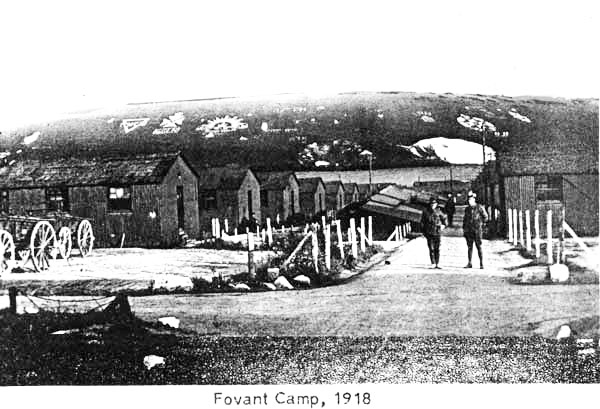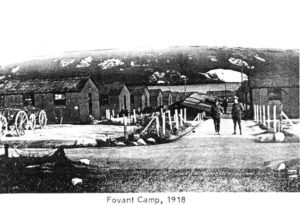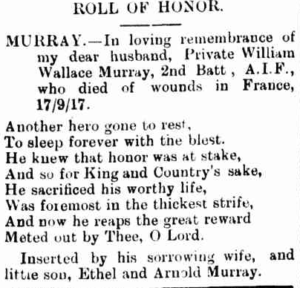William Wallace Murray saw just three months of active service before sustaining a gunshot wound that would prove to be fatal. On 17 September 1917 his battalion was engaged near Ypres in Belgium when a bullet entered his left buttock and penetrated his abdomen. Private Murray was evacuated to the nearby 3rd Canadian Casualty Clearing Station, where he later died of his wounds. He was 33 years of age.
William Wallace Murray was born in Molong in 1884. His parents were Walter Rennie and Mary Jane Murray. He was educated at Manildra school.
In March 1910 William – also known as Wal – married Ethel May Cotter in Parkes. Their son Arnold was born in Parkes in 1913.
When William enlisted on 9 May 1916 he was living in Dora Street, East Orange, and working as a labourer. He spent four months in camp; he embarked for overseas service on 9 September, arriving in Plymouth on 26 October 1916. Wal undertook further training at Fovant and Perham Downs before proceeding to France on 28 February 1917. He was stationed at the 1st Australian Divisional Base Depot in Etaples until 11 April, when he joined the 2nd Battalion.
Three days later Wal was admitted to the 14th Field Ambulance with lumbago. He was transferred to Rouen, firstly to the 3rd Stationary Hospital, followed by the 6th General Hospital on 1 May 1917. He then spent several weeks at the 2nd Convalescent Depot, rejoining his battalion on 8 June 1917.
Thirteen weeks later William sustained the fatal gunshot wound. According to a comrade who was with him at the time Wal didn’t appear to be badly injured, and even managed to walk along the Hooge road towards the dressing station. He was taken to the 3rd Canadian Casualty Clearing Station, where he died from his wounds. William was buried in the nearby Lijssenthoek Military Cemetery.
On his attestation papers William indicated that he was married with two children. Indeed, one of William’s comrades who was interviewed by the Red Cross Bureau following his death said: “I heard him speak of two children”.
Following her husband’s death Ethel was granted a widow’s pension of £2 per fortnight. A pension of 15 shillings a fortnight was granted to their son Arnold, a third pension to the value of 20 shillings a fortnight was granted to an adopted child, Clarice Muriel Grace Fenning.
On the first and second anniversary of her husband’s death Ethel posted in memoriam notices in the press. Interestingly, the notices were annotated “Inserted by his sorrowing wife, and little son, Ethel and Arnold Murray.” No mention was made of Clarice.
In 1923 the Anzac Memorial Avenue of trees was planted along Bathurst Road to commemorate fallen WWI soldiers. A tree was planted in honour of “Pte WW Murray”; it was donated by JC Lee. Very few of the trees are still standing today.
William Wallace Murray is commemorated on the following honour rolls: Orange Public School, St Luke’s Church Manildra, Manildra Soldiers Memorial Hall and the Cudal District Honour Roll, the World War I Roll of Honour on the southern face of the Orange Cenotaph and on panel number 33 on the Roll of Honour at the Australian War Memorial in Canberra.
Many other members of the extended Murray clan in the Central West served during WWI, including William’s cousins George Wren Murray, Sage Clyne Sinclair Murray and Walter Stewart Murray, his second cousin, Hugh Miller Murray, and his uncle, George Murray.
Orange historian William (Bill) Folster estimates that more than fifty men from the extended Murray family in the Central West answered the call to arms during the First World War. The Murray clan has a long tradition of military service. Sage’s namesake and great grandfather, Sage Murray, fought in the Battle of Waterloo, and his great uncles in the Sudan and Boer Wars.



